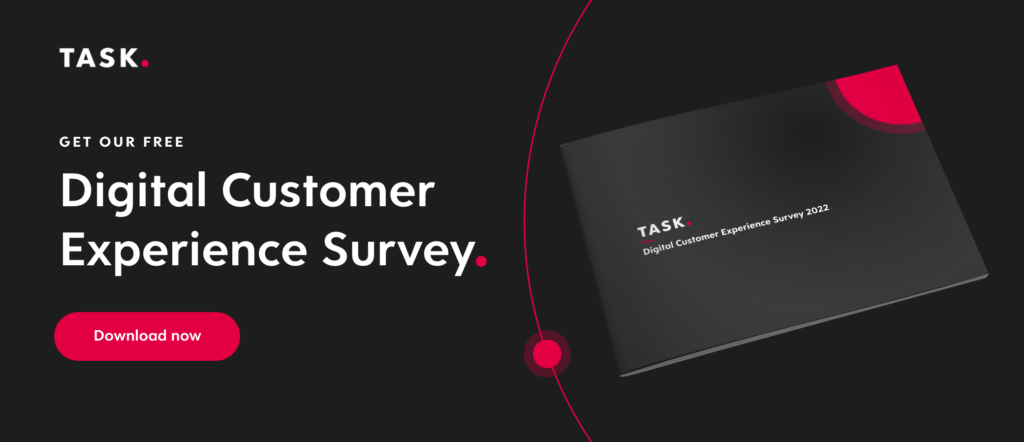The state of the industry, between lingering setbacks from the pandemic and the coming economic downturn, has been somewhat sobering for hospitality businesses. There have already been $185 billion in losses since the pandemic started, and only the businesses that have embraced the changing industry landscape have managed to thrive. To be successful in today’s tough market, technology – and specifically, AI-powered tools – are key.
Automation is helping restaurants streamline their workflows, minimize food waste, and deliver faster service overall – but what exactly will AI-driven technology mean for the guest experience?
We’re digging into how Artificial Intelligence can be used beyond the context of just reducing labor costs to actually enhance guest experiences and make deep personalization possible.
The Five Ways that AI Benefits Customers
“No matter what your initiative is in business, it must improve the service. Every innovation should first and foremost answer the question of What do customers need, and how can we provide it for them better and more efficiently?” cautions TASK’s President for North America, John Laporte.
Keeping the customer experience at the forefront of innovation will ensure that any changes you bring to your business will drive forward better retention rates and customer lifetime value. After all, serving customers well, and encouraging long-term relationships with them is what will keep your restaurant afloat even through tough times.
1. Drive better personalization
To bring forward more personal experiences, especially at a larger or franchise-level scale, businesses rely on accurate customer data analysis. This involves identifying patterns in customer behaviors that can be used to offer and predict personalized recommendations. AI even allows you to tailor the ordering experience to each customer depending on their past behavior and their interactions in real-time.
Remember that engaging your customers in direct, personal communication specific to their preferences is one of the best ways to increase your loyalty, retention rates, and order sizes.
It’s important to understand that, as TASK Group, Plexure Division’s Customer Success Manager Kerri Linderboom puts it, “Demographics data can only take you so far. The far more meaningful insight is tapping into your customer’s lifestyles and their routines – this will tell you not just what they like, but also when they are most likely going to engage with your brand.”
To tap into these more complex insights, businesses must leverage AI-driven analytics. From monitoring social media activity to identifying brand loyalty to building a rewards system that incorporates machine learning – the key to accurate, automated personalization starts with AI technology.
2. Improve the Ordering Experience
According to the New York Times, restaurants across the US are so understaffed that they are struggling to even get to the phone to take orders. Not only does that mean lost sales and frustrated customers, but it also fuels a negative perception of your brand, which can be nearly impossible to reroute.
To make sure your business never misses a call, email, or text, you might need to consider implementing conversational AI across your communication and order-taking channels. This might include more self-service options, such as AI-driven kiosks, mobile apps, or QR codes. It may extend to GPT-powered chatbots, now that the technology has matured such that APIs are available. Leveraging the power of voice AI is also being deployed for drive-thru windows, phone lines, and even at the ordering counter.
“There are so many ways to use this kind of technology to bring an added element of fun to your experience,” says John. “I like to play with the idea of using celebrity’s voices to take your order using AI, or letting customers have the choice about which voice they want to hear at your restaurant. This is really where AI becomes a tool for enhancement, not just a bandaid to cover up a problem.”
How To Audit Your Customer Loyalty Program
Boosting your loyalty program is one of the most powerful ways to drive higher customer revenues. Here’s what you can do to make it more competitive.
3. Offer faster service and shorter wait times
Quicker service is possible if you have robust, accurate systems for forecasting demand and automation tools to reduce friction in your workflows. AI-driven technology powers digital kitchen management and restaurant inventory management, which helps:
- Organize and prioritize new orders
- Optimize your kitchen tasks and staff
- Reduce the rate of errors and miscommunication
4. Improve consistency and quality
One of the biggest challenges for hospitality enterprises is managing a smooth system that delivers excellent food and service with unparalleled consistency. There’s a reason why McDonald’s has become so successful worldwide. As Plexure’s Senior Account Director for McDonald’s Global, Tomas Dickson, explains: “McDonald’s is the number one downloaded app in the world – and that’s because they have a brand loyalty unlike any other in the industry. It all comes down to delivering accountable, familiar service at a global level.”
AI helps make this possible for other brands by ensuring consistency in food preparation, inventory tracking, and menu engineering. John Laporte notes that there are opportunities to combine AI with high-definition video to screen outgoing delivery orders for consistency – and tools like this may be the future of ensuring better ongoing service.
5. Heighten the in-store experience
Automation opens the doors to faster, more efficient digital experiences at store locations. From automated self-service kiosks to interactive digital menu boards to AI voice technology, there is so much opportunity to bring a branded experience into every touchpoint.
“Customers are looking for convenience. Anything you can do as a restaurant business to make their lives easier and their time in your store more enjoyable, is going to drive higher satisfaction rates and more repeat visits,” says TASK’s Vice President of US Business Development, Trevor Dee.
The What(s), Why(s), and How(s) of a Digital Signage Content Strategy
40% of purchasing decisions are made before ordering at the counter. Invest in a clear digital signage content strategy to maximize this opportunity.
What Does This Mean for Hospitality Staff?
Let’s get one thing clear – implementing AI into your restaurant does not mean eliminating staff members or human interaction. While some restaurants are experimenting with zero front-of-house staff members, most businesses leverage AI in conjunction with their employees to deliver faster, better service.
For example, AI can be trained to empathetically handle customer queries – such as phone calls asking about opening hours, customer complaints through a messaging platform, or concerns about their loyalty account. That takes the pressure off of staff and ensures consistent customer service.
When it comes to workflow, AI helps staff make more strategic decisions in the moment. From organizing cooks to prepare for an influx of orders to handling order-taking to free up staff time for more value-adding tasks – AI helps reduce the grunt work for employees, saving them stress and time.
Ultimately, AI operates like a highly versatile and effective tool to make life easier for both customers and staff. The key to a flawless implementation of AI technology is to train staff so that they can leverage it where it adds the most impact.
Best Practices to Leverage AI & Automation for Your Restaurant
Before you jump into actually using AI in your restaurant’s day-to-day, it’s important to carefully consider how it fits into your overall business strategy. Start by identifying the entry points of your core business practice that could be improved with automation or AI. As part of this process, think about how implementing this technology will help or change the experience for your staff and your customers.
When it comes time to implement AI into your tools and platforms, make sure you are deploying a fully-integrated technology ecosystem to ensure total connectedness across your entire business. You’ll want to emphasize multichannel continuity and a holistic digital stack.
Be sure to test and validate the platform as part of a pilot or implementation phase. Once you are regularly using a piece of new technology, it’s also best practice to continually monitor and audit the system. This makes it easier to spot issues quickly, gather new learnings, and implement improvements as you go.
If you’re looking for the next step in ordering systems, optimized processes, and personalization, then it might be time to look closer at incorporating AI-driven technology into your restaurant. Staying ahead of the market is about more than just increasing efficiency – it is also a future-thinking tool to deliver better, faster, more innovative services and experiences to your guests.

